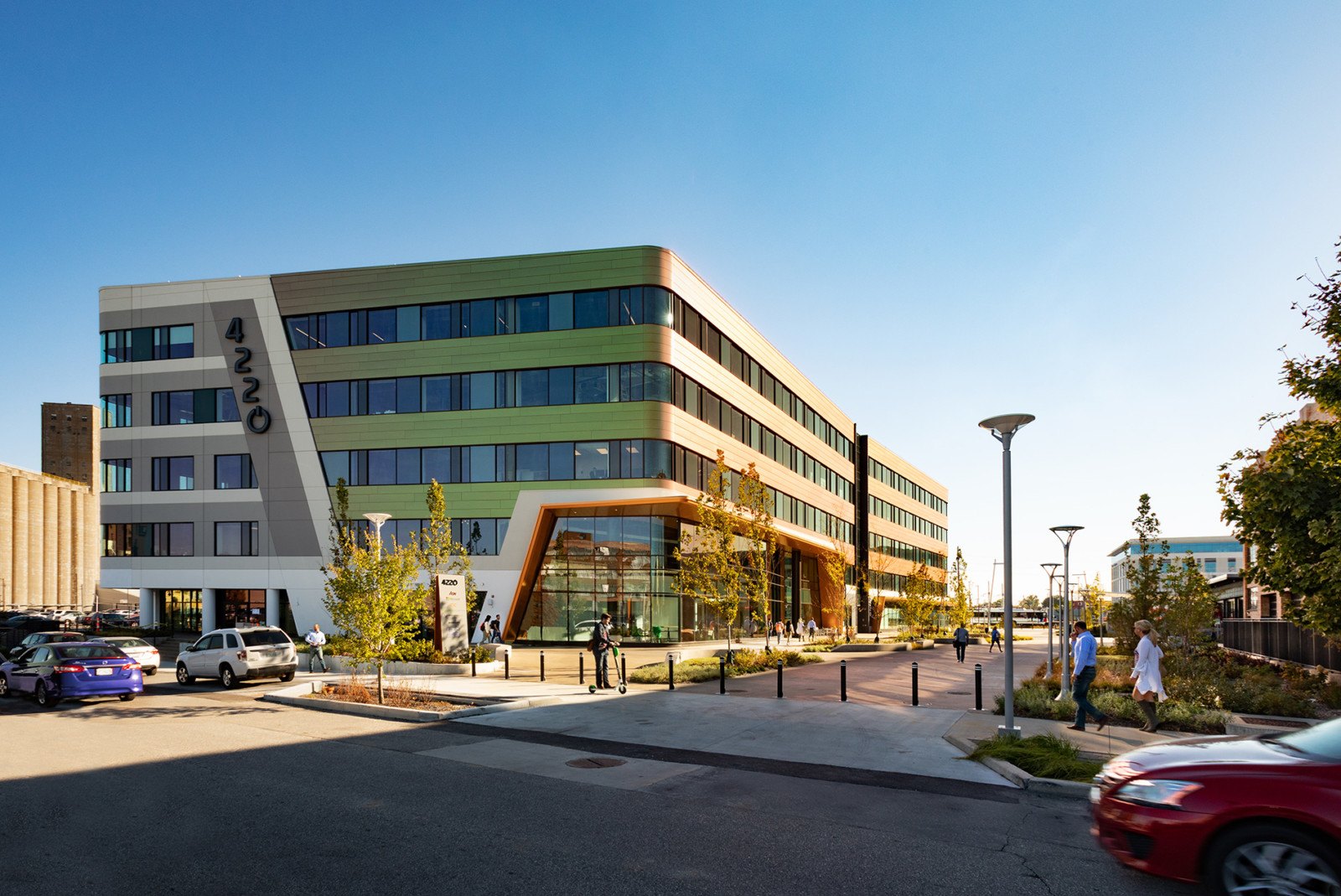Margaret McDonald, director of interiors for HOK’s St. Louis practice, talks to RE Journals about Cortex Innovation Community, a 200-acre research and business district that is adding a Microsoft Technology Center (MTC) in a new building designed by HOK.
Excerpted from RE Journals:
The Microsoft Technology Center will support a booming tech scene with project strategy, business solutions, resources for cloud, mobile and social help, and optimization of their technologies. Beyond business, Microsoft will offer software grants and educational programs for students, nonprofits and the community.
In the past, the workplace was isolated—people mostly drove to a suburban office, worked in a lonely cubicle and kept all ideas within the company. What’s in demand today is very different—walkable, urban, collaborative work environments. And that changes the way office space is designed, how multi-tenant buildings are leased and how employees collaborate.
“We’re in a position where we are much more comfortable sharing than we were before. Using an Uber to get somewhere, connecting to Wi-Fi in a café, storing our data on a cloud. Sharing is happening in a different way, and now we’re seeing that in the workplace,” said McDonald, whose team is designing the interiors of the MTC.
McDonald also helped steer the design of the @4240 building (above) in the Cortex Innovation Community. HOK created the Cortex master plan, too.
One of McDonald’s clients equated working in the Cortex community to being on a college campus. There are infinite opportunities to meet new people and spaces to work and meet. Plus, it’s a highly sociable environment. Plain and simple, it’s inspiring.
“It is an interesting shift to think about,” McDonald said referring to the changes she sees in how multi-tenant buildings are leased.
“The previous approach to filling a building was attracting tenants to a location and getting them to take up square footage. The tenants at Cortex sign leases for opportunities to collide and connect. They think, ‘Wow, Microsoft is in this building; I want to be, too,’” McDonald said.
Offices used to be designed so that the employee could do everything in one small space—now companies are realizing that this approach doesn’t work, McDonald said. Giving people access to different ways of working and different choices lets them be more productive.
Technology is a huge catalyst in changing the way office space is designed. Offices are going cordless, offering more collaborative spaces and providing office personalization. This means incorporating charging pads, a selection of work areas, outdoor spaces and reconfigurable walls to keep a balance between privacy and communal. McDonald thinks the future of offices will become entirely customized so that when an employee walks into his or her space, the room knows what temperature, screen brightness or apps to open at different times of day.
Places like Cortex give the stereotypical workplace a shot of adrenaline and make it harder to imagine a future where half of the population works from home.
“Most of us want to be around other people and gather together. If you’re proud of what you’re doing than you’re going to want to come together,” McDonald said.
